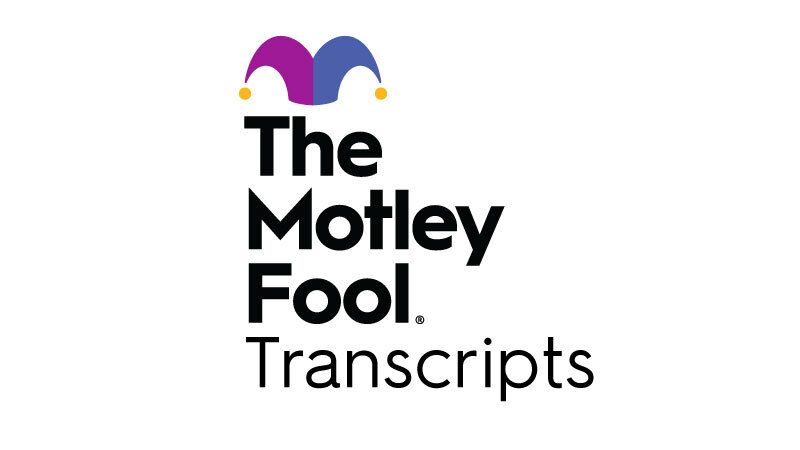Copyright Benzinga

Adventurous traders typically prefer hot tech innovators for obvious reasons. However, big-box retailer Walmart Inc (NYSE:WMT) deserves a closer inspection. While it's not the most exciting enterprise available, notable fluctuations in market behavior can potentially signal relatively strong moves. Further, the company's upcoming third-quarter earnings report could add an extra kick for WMT stock. On Nov. 20, Walmart is scheduled to release its financial report, with analysts anticipating earnings of 60 cents per share on revenue of $175.9 billion. In the year-ago quarter, the big-box retailer delivered earnings per share of 58 cents on sales of $169.59 billion, beating the consensus view of 53 cents and a top-line print of $167.72 billion. Generally, Walmart exceeds expectations so it would be more of a surprise if the retailer disappointed the Street. That said, WMT stock has slipped about 2% in the trailing week, with investors concerned about broader economic stability. Notably, President Donald Trump's economic approval rating has suffered a significant decline. Still, the volatility in WMT stock could present an intriguing opportunity for contrarian, data-driven traders. While the number of distributive sessions have outweighed the number of accumulative sessions in the trailing 10 weeks, WMT still moved northward. That's a very unusual signal, one that could potentially be exploited. Better yet, nobody is talking about this signal because the traditional methodologies of fundamental and technical analysis are blind to it. Because these approaches are "workless" — meaning that without falsifiability, the approaches neither work nor not work — they're contingent on the author making the claim. That really means fundamental and technical approaches bank on the analyst, not the analysis. There's a better approach when it specifically comes to options and that's quantitative analysis. How To Make WMT Stock Options Great Again To borrow a phrase from the political lexicon, options don't care about your feelings. Further, you cannot engage in constructive dialogue with options nor can you identify with a particular state of existence if it does not purport with ontological reality. The options arena is a cold, cruel and extremely binary environment: you are either profitable or you are not. Fortunately, we can make options great again through quantitative analysis. At the heart, quantitative analysis is the study of pricing behaviors in the ultimate aim of extracting profitable ideas. It sounds like technical analysis except that quants use probabilities to make their decisions whereas technicians use pareidolia. More specifically, quantitative analysis is the study of different stimuli and their probabilistic effects on market behavior. Let's look at American football as an analogy. Typically, a ball carrier is going to be hit most frequently by defensive linemen but the biggest hits usually come from strong safeties. That's because while safeties are smaller than linemen, they often start deep in the defensive backfield and torpedo themselves into the ball carrier. It’s the same concept in the market. With quantitative analysis, we can not only identify the strong safety in the defensive scheme but we can also measure the probabilistic outcome of the safety's kinetic energy generated. Even better, if the market is pricing in a hit from a defensive lineman (so to speak) but we know that it's a strong safety dishing out the punishment, then we can buy that outcome instead. Let's look at the math. Under baseline conditions, the projected 10-week returns of WMT stock would be expected to range between a median price of $103 and $111 (assuming an anchor price of $104.92). Further, price clustering would be expected to be most prominent at just shy of $108. However, WMT stock is not in a baseline state but is rather structured in a 4-6-U formation: four up weeks, six down weeks, with an overall upward trajectory. This is a very rare pattern, which skews the risk tail to $100 and the reward tail up to nearly $118. Subsequently, WMT has become a higher-risk, higher-reward opportunity. Still, the main takeaway is that under 4-6-U conditions, price clustering would be expected to occur predominantly at around $111. That's a 2.78% positive delta in clustering dynamics that no one is talking about. Exploiting The Mismatch Setting aside the earnings matter — which can really impart some funny business on WMT stock — arguably the most tempting idea is the 107/108 bull call spread expiring Nov. 21. This transaction involves buying the $107 call and simultaneously selling the $108 call, for a net debit paid of $47. Should WMT rise through the second-leg strike ($108) at expiration, the maximum profit is $53, a payout of nearly 113%. Breakeven for the above trade is $107.47, which should be a doable target. On a terminal median basis, WMT stock should be able to hit around $109 by the fourth forward week, which coincides with the Nov. 21 expiration date. Of course, the Nov. 20 earnings disclosure will almost certainly play a heavy role on how WMT stock responds. There's a possibility that you can dial up the second-leg strike to $109 or $110. However, you should be aware that implied volatility relative to historic volatility for the Nov. 21 options chain is not that pronounced, meaning that the market doesn't seem to be expecting a big move. Unfortunately, the quant model can only see so much. Therefore, the most rational debit-based strategy, in my opinion, is the aforementioned 107/108 spread. The opinions and views expressed in this content are those of the individual author and do not necessarily reflect the views of Benzinga. Benzinga is not responsible for the accuracy or reliability of any information provided herein. This content is for informational purposes only and should not be misconstrued as investment advice or a recommendation to buy or sell any security. Readers are asked not to rely on the opinions or information herein, and encouraged to do their own due diligence before making investing decisions. Read More: Options Corner: Tech Laggard Texas Instruments Could Be Mispriced In Your Favor Image: Shutterstock



